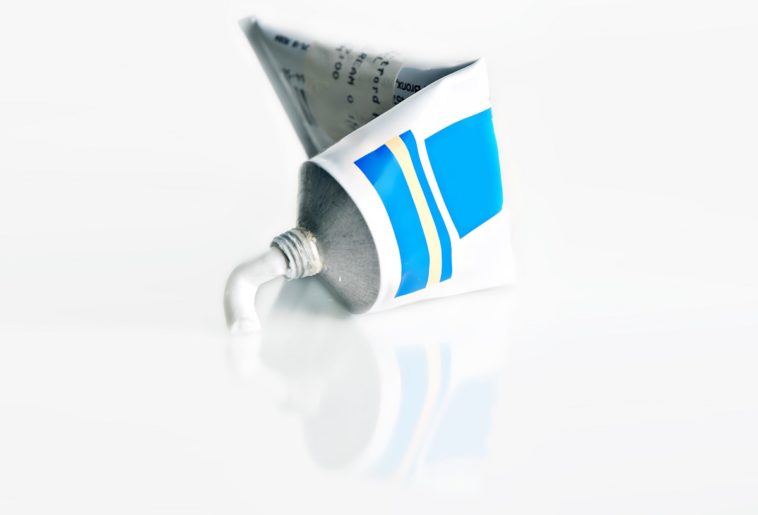Topical medication is often prescribed to achieve repigmentation in vitiligo. In this treatment method, a cream or ointment is applied to affected areas of the skin thinly. The treatment yields best results if creams or ointments are applied soon after the diagnosis. While many vitiligo fighters start to see results in a few months, some don’t respond to the treatment at all.
The topical medication can be prescribed keeping pattern, size and location of vitiligo patches in mind. Sometimes, steroid creams can be prescribed alongside phototherapy or laser therapy to enhance the effectiveness of vitiligo treatment. Topical Corticosteroids and Immunosuppressant creams are most widely prescribed under topical medication for vitiligo.
Topical Corticosteroids
Corticosteroid creams are anti-inflammatory medications that attempt to slow vitiligo’s progression and subsequently allow melanocytes to return. Since a potent formula of corticosteroids is essential to treat vitiligo (these creams come in varying strength), a dermatologist needs to monitor its use closely. Topical corticosteroids are often prescribed for a long-term. Hence follow-up appointments with a dermatologist are crucial at least four times per year. Guidance on the application pattern and frequency is provided by dermatologist and should be followed religiously. Typically, it is recommended to apply these creams once a day.
Mostly prescribed corticosteroids include fluticasone propionate, betamethasone valerate, and hydrocortisone butyrate. In addition to these creams, your dermatologist may also prescribe ultra-potent Corticosteroids like Temovate. However, applications of these creams might not give the desired results for everyone.
Possible side effects include acne, stretch marks, thinning of your skin (atrophy), visible blood vessels appearing (telangiectasia), excess hair growth (hypertrichosis) and contact dermatitis (inflammation of your skin). A topical corticosteroid may not be prescribed to a pregnant woman.
Topical Calcineurin Inhibitors
Calcineurin inhibitors are an immune-modulating medication, often prescribed to stop the progression of vitiligo when the skin disorder cannot be treated with topical corticosteroids. These medication work to prevent the body’s immune system from attacking pigment-producing melanocytes. Calcineurin inhibitors (unlike topical corticosteroids) are typically used to treat vitiligo on sensitive areas like the eyelids, lips, and genitals. These inhibitors are available in forms of a cream (called Pimecrolimus) and ointment (called Tacrolimus).
The ointment or cream is applied directly to the affected skin once or twice a day. They may begin to take effect within a few months. Since topical calcineurin inhibitors tend to produce fewer long-term side effects than corticosteroids, they are usually part of a long-term treatment plan. Side effects may include a stinging sensation (which generally fades over time).
Topical Calcipotriene
Initially developed for the treatment of psoriasis, Calcipotriene is a synthetic derivative of vitamin D that has been used frequently in vitiligo treatment. It is available in the form of a cream and ointment. Often prescribed for two times application in a day, Calcipotriene may stimulate the production of pigment in depigmented vitiligo.
The topical medication usually takes a few months to show positive results. Side effects are uncommon except some vitiligo fighters experience mild skin irritation after applying it. Calcipotriene may yield best results when combined with other topical medications, phototherapy, or laser treatments for vitiligo.
Immunosuppressant Creams
These creams are applied to suppress the immune response in the areas of skin where they are applied. Protopic and Elidel are two popular immunosuppressant creams, which are labeled for use to cure Eczema, but many dermatologists prescribe them for vitiligo too. The Food and Drug Administration (FDA) has issued a Public Health Advisory regarding the use of these creams. Hence, a dermatologist’s ‘go ahead’ is essential before using any of these two creams. Still, many experts claim Protopic to be a very useful alternative to topical corticosteroids.
Topical Oxsoralen
Oxsoralen is highly phototoxic topical medication for vitiligo, which causes a sunburn effect on the skin and the phototoxicity lasts for three days or more. Healthcare experts recommend application of Oxsoralen only for small spots. Experienced physicians and well-informed patients should be involved in the process.
Topical Photocil
Many research studies are in process to deem Photocil as an effective and safe method to treat vitiligo. The permanency of the topical treatment is also subject of many ongoing investigations. Sunlight activates this topical cream to initiate repigmentation in the affected skin. The possible side effects may include severe sunburn or hyper-pigmentation.

